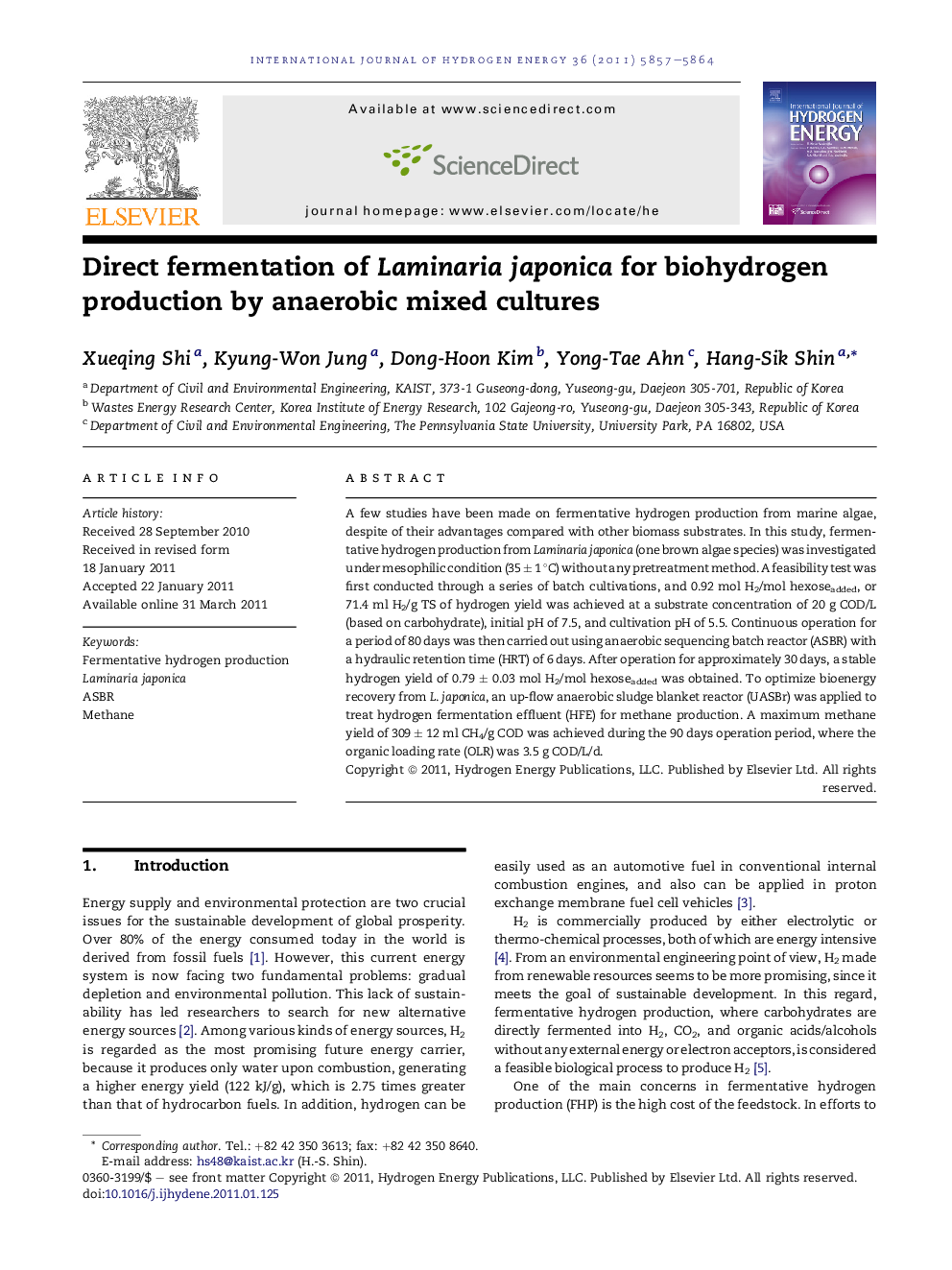| Article ID | Journal | Published Year | Pages | File Type |
|---|---|---|---|---|
| 1279515 | International Journal of Hydrogen Energy | 2011 | 8 Pages |
A few studies have been made on fermentative hydrogen production from marine algae, despite of their advantages compared with other biomass substrates. In this study, fermentative hydrogen production from Laminaria japonica (one brown algae species) was investigated under mesophilic condition (35 ± 1 °C) without any pretreatment method. A feasibility test was first conducted through a series of batch cultivations, and 0.92 mol H2/mol hexoseadded, or 71.4 ml H2/g TS of hydrogen yield was achieved at a substrate concentration of 20 g COD/L (based on carbohydrate), initial pH of 7.5, and cultivation pH of 5.5. Continuous operation for a period of 80 days was then carried out using anaerobic sequencing batch reactor (ASBR) with a hydraulic retention time (HRT) of 6 days. After operation for approximately 30 days, a stable hydrogen yield of 0.79 ± 0.03 mol H2/mol hexoseadded was obtained. To optimize bioenergy recovery from L. japonica, an up-flow anaerobic sludge blanket reactor (UASBr) was applied to treat hydrogen fermentation effluent (HFE) for methane production. A maximum methane yield of 309 ± 12 ml CH4/g COD was achieved during the 90 days operation period, where the organic loading rate (OLR) was 3.5 g COD/L/d.
